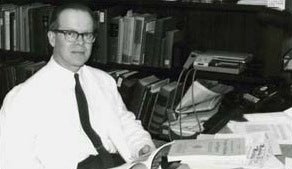The iron lung, invented by HSPH’s Philip Drinker in 1928, pulled thousands of polio sufferers back from the brink of death. But with polio still ravaging the world, scientists in the 1930s and 1940s were frantically working on a polio vaccine. The science had stalled, because no one could grow the virus in a form that would permit mass production of vaccine.
As a wave of polio swept the United States in 1948, 32-year-old Thomas Weller was logging long hours in a lab at Harvard-affiliated Children’s Hospital, trying to develop a new way to culture viruses in test tubes. One day at the bench, when he was done injecting varicella, the chickenpox virus, into test tubes, he noticed four leftover flasks with human embryonic tissue suspended in a nutrient broth. He walked to the laboratory freezer and took out samples of poliovirus obtained from the brain of an infected mouse.
Weller inoculated the extra flasks with the poliovirus. Then he added an innovative twist to the experiment: Instead of discarding the tissue every one or two days and keeping the fluids—the usual protocol—he kept the tissues in the flasks and frequently replenished the nutrient fluids. That way, slow-growing viruses were not inadvertently thrown out.
The chickenpox cultures never took—but the polio cultures did, on Weller’s first try. The virus grew not only in brain tissue but also in cells derived from skin, muscle, and intestines. By finding a way to grow the virus in non-nervous tissue, Weller and his colleagues, John Enders and Frederick Robbins, paved the way for safe polio vaccines in the 1950s and ’60s. In 1949, Weller joined the HSPH Department of Comparative Pathology and Tropical Medicine, rising through the ranks as instructor, assistant professor, and associate professor.
In 1954, the three scientists shared a Nobel Prize in Physiology or Medicine. The prize came just months after Weller had been named the Richard Pearson Strong Professor of Tropical Public Health at Harvard, as well as chair of the department. “These discoveries incited a restless activity in the virus laboratories the world over,” noted the award committee. “The tissue culture technique was rapidly made one of the standard methods of medical virus research.” The discovery made possible the creation, just a few years later, of a polio vaccine.
Is there an event, person, or discovery in Harvard School of Public Health history that you’d like to read about? Send your suggestions to centennial@hsph.harvard.edu.
